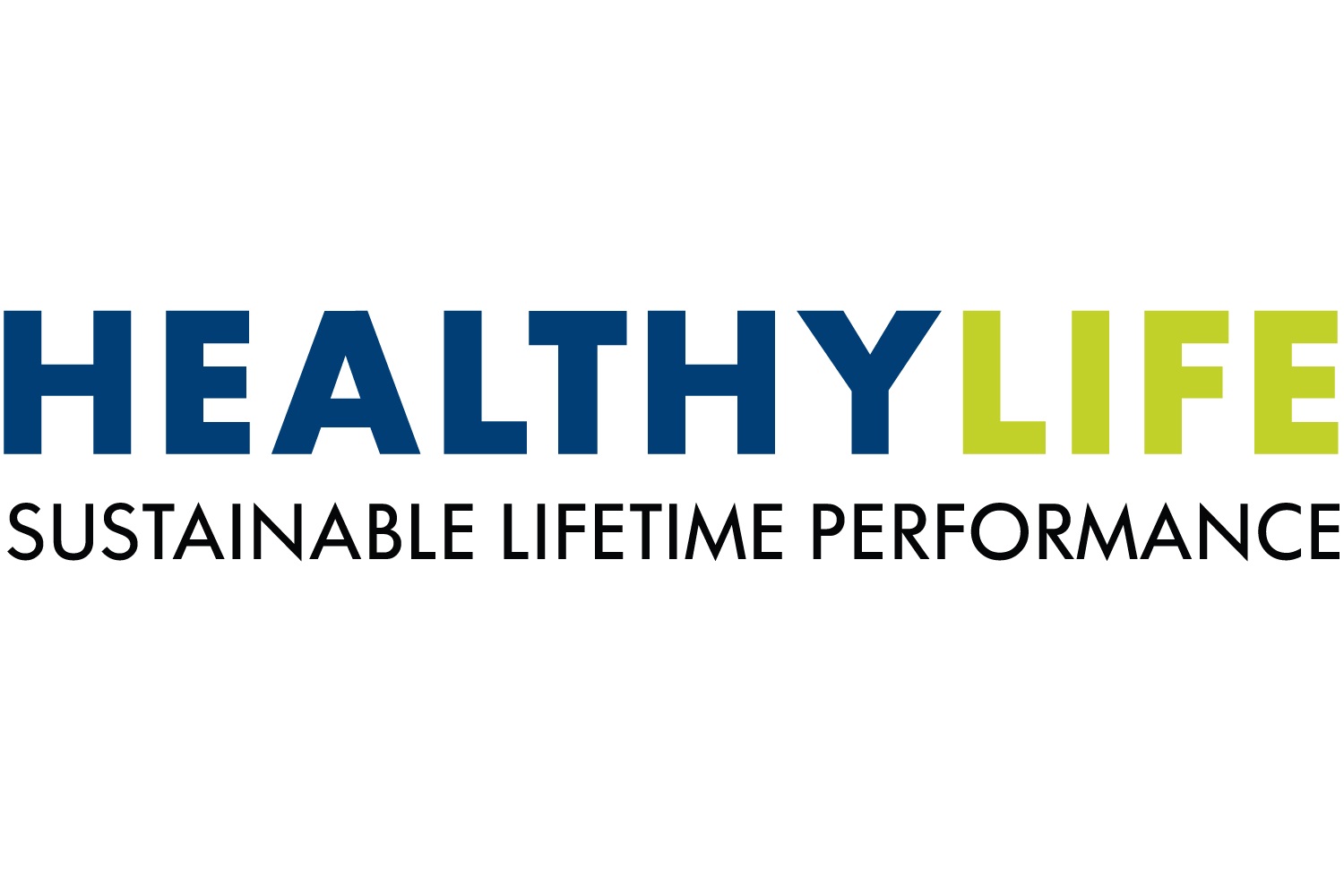Scientific Journal
Chelating agents can be used to improve the nutritional availability of trace minerals within the gastrointestinal tract. This study was conducted to determine the effect of a novel chelating agents, L-glutamic acid N,N-diacetic acid (GLDA), a biodegradable alternative to ethylenediaminetetraacetic acid on the nutritional bioavailability of zinc in broilers. Twelve dietary treatments were allocated to 96 pens in a randomized block design. Pens contained 10 Ross 308 male broilers in a factorial design with 6 incremental zinc levels (40, 45, 50, 60, 80, and 120 ppm of total Zn), with and without inclusion of GLDA (0 and 100 ppm) as respective factors. Experimental diets were supplied from day 7 to 21/22 and serum, liver and tibia Zn content were determined in 3 birds per pen. Growth performance and liver characteristics were not affected by dietary treatments, but both supplemental Zn and GLDA enhanced tibia and serum zinc concentration. The positive effect of GLDA was observed at all levels of the dietary Zn addition. The amount of zinc needed to reach 95% of the asymptotic Zn response was determined using nonlinear regression. When GLDA was included in the diet, based on tibia Zn, the same Zn status was achieved with a 19 ppm smaller Zn dose while based on serum Zn this was 27 ppm less Zn. Dietary GLDA reduces supplemental Zn needs to fulfill nutritional demands as defined by tibia Zn and serum Zn response. Considering the positive effect on the nutritional availability of Zn in broilers, GLDA presents an opportunity as biodegradable additive, to reduce Zn supplementation to livestock and thereby reducing Zn excretion into the environment, while fulfilling the nutrition Zn needs of farmed animals.
Efficacy of l-glutamic acid, N,N-diacetic acid to improve the dietary trace mineral bioavailability in broilers
Scientific Journal
Trace minerals are commonly supplemented in the diets of farmed animals in levels exceeding biological requirements, resulting in extensive fecal excretion and environmental losses. Chelation of trace metal supplements with ethylenediaminetetraacetic acid (EDTA) can mitigate the effects of dietary antagonists by preserving the solubility of trace minerals. Lack of EDTA biodegradability, however, is of environmental concern. l-Glutamic acid, N,N-diacetic acid (GLDA) is a readily biodegradable chelating agent that could be used as a suitable alternative to EDTA. The latter was tested in sequential dose–response experiments in broiler chickens. Study 1 compared the effect of EDTA and GLDA in broilers on supplemental zinc availability at three levels of added zinc (5, 10, and 20 ppm) fed alone or in combination with molar amounts of GLDA or EDTA equivalent to chelate the added zinc, including negative (no supplemental zinc) and positive (80 ppm added zinc) control treatments. Study 2 quantified the effect of GLDA on the availability of native trace mineral feed content in a basal diet containing no supplemental minerals and supplemented with three levels of GLDA (54, 108, and 216 ppm). In study 1, serum and tibia Zn clearly responded to the increasing doses of dietary zinc with a significant response to the presence of EDTA and GLDA (P < 0.05). These results are also indicative of the equivalent nutritional properties between GLDA and EDTA. In study 2, zinc levels in serum and tibia were also increased with the addition of GLDA to a basal diet lacking supplemental trace minerals, where serum zinc levels were 60% higher at the 216 ppm inclusion level. Similar to the reported effects of EDTA, these studies demonstrate that dietary GLDA may have enhanced zinc solubility in the gastrointestinal tract and subsequently enhanced availability for absorption, resulting in improved nutritional zinc status in zinc-deficient diets. As such, GLDA can be an effective nutritional tool to reduce supplemental zinc levels in broiler diets, thereby maintaining health and performance while reducing the environmental footprint of food-producing animals.
Effect of immunized egg proteins on the performance and neonatal diarrhoea incidence in newborn calves
Scientific Journal
The aim of this study was to assess the effects of feeding immunized egg proteins (IEP) on the health and performance of newborn dairy calves. Sixty‐four Holstein calves, both male and female, were divided over two treatments. Calves either received IEP or a placebo (PCB) in their colostrum and calf milk replacer (CMR) for the first 14 days of their life. Until day 49, CMR was offered at 15% of birth weight (BW), at 10% on days 49–57 and at 5% on days 57–63. In addition, calves received starter concentrate, chopped straw and water from 3 days old until 70 days old at the end of study. Individual CMR and concentrate intake were measured daily whilst BW was recorded weekly. Visual faecal scoring and health observations were conducted daily. Faecal samples were collected weekly up to 4 weeks and during the first 4 days of scouring to screen for presence of Cryptosporidium parvum, rotavirus, coronavirus, E. coli and Salmonella. Results indicated that feeding IEP increased BW (p < .05) at 42 and 56 days old, and BW also tended (p = .06) to be higher after weaning at 63–70 days old compared to the PCB group. When analysed using a repeated measures model, compared to feeding PCB, feeding IEP increased total concentrate consumption (p = .001) by 3.6kg/calf. Over the entire study, daily water intake was higher (p = .002) for the IEP group when compared with the PCB group. In the IEP group, 12 calves were scored as scouring whereas there were 14 calves in the PCB group. There were no significant differences between treatments in faecal pathogen load of neither healthy nor scouring calves. In conclusion, supplementing IEP during the first 14 days of calf life improved the performance of newborn calves. Further work is warranted to understand the mode of action of IEP in calves.
Organic Acids as Alternatives for Antibiotic Growth Promoters Alter the Intestinal Structure and Microbiota and Improve the Growth Performance in Broilers
Scientific Journal
The present study aimed to investigate the effects of organic acids (OA) as alternatives for antibiotic growth promoters (AGP) on growth performance, intestinal structure, as well as intestinal microbial composition and short-chain fatty acids (SCFAs) profiles in broilers. A total of 336 newly hatched male Arbor Acres broiler chicks were randomly allocated into 3 dietary treatments including the basal diet [negative control (NC)], the basal diet supplemented with 5 mg/kg flavomycin, and the basal diet supplemented with OA feed additives. Each treatment had eight replicates with 14 birds each. The results showed that AGP and OA promoted growth during day 22–42 compared with the NC group (P < 0.05). OA significantly increased the jejunal goblet cell density and ileal villus height on day 42 compared with the NC group (P < 0.05). Meanwhile, OA up-regulated the mRNA expression of jejunal barrier genes (Claudin-3 and ZO-1) relative to the NC group (P < 0.05). Significant changes of microbiota induced by the OA were also found on day 42 (P < 0.05). Several SCFAs-producing bacteria like Ruminococcaceae, Christensenellaceae, and Peptococcaceae affiliated to the order Clostridiales were identified as biomarkers of the OA group. Higher concentrations of SCFAs including formic acid and butyric acid were observed in the cecum of OA group (P < 0.05). Simultaneously, the abundance of family Ruminococcaceae showed highly positive correlations with the body weight and mRNA level of ZO-1 on day 42 (P < 0.05). However, AGP supplementation had the higher mRNA expression of Claudin-2, lower goblet cell density of jejunum, and decreased Firmicutes to Bacteroidetes ratio, suggesting that AGP might have a negative impact on intestinal immune and microbiota homeostasis. In conclusion, the OA improved growth performance, intestinal morphology and barrier function in broilers, which might be attributed to the changes of intestinal microbiota, particularly the enrichment of SCFAs-producing bacteria, providing a more homeostatic and healthy intestinal microecology.
The role of lactose in weanling pig nutrition: a literature and meta-analysis review
Scientific Journal
Lactose plays a crucial role in the growth performance of pigs at weaning because it is a palatable and easily digestible energy source that eases the transition from milk to solid feed. However, the digestibility of lactose declines after weaning due to a reduction in endogenous lactase activity in piglets. As a result, some lactose may be fermented in the gastrointestinal tract of pigs. Fermentation of lactose by intestinal microbiota yields lactic acid and volatile fatty acids, which may positively regulate the intestinal environment and microbiome, resulting in improved gastrointestinal health of weanling pigs. We hypothesize that the prebiotic effect of lactose may play a larger role in weanling pig nutrition as the global feed industry strives to reduce antibiotic usage and pharmacological levels of zinc oxide and supra-nutritional levels of copper. Evidence presented in this review indicates that high dietary lactose improves growth performance of piglets, as well as the growth of beneficial bacteria, particularly Lactobacillus, with the positive effects being more pronounced in the first 2 weeks after weaning. However, the risk of post-weaning diarrhea may increase as pigs get older due to reduced lactase activity, high dietary lactose concentrations, and larger feed intakes, all of which may lead to excessive lactose fermentation in the intestine of the pig. Therefore, dietary lactose levels exert different effects on growth performance and gastrointestinal physiological functions in different feeding phases of weanling pigs. However, no formal recommendation of lactose for weanling pigs has been reported. A meta-analysis approach was used to determine that diets fed to swine should include 20%, 15%, and 0 lactose from d 0–7, d 7–14, and d 14–35 post-weaning, respectively. However, sustainable swine production demands that economics must also be taken into account as lactose and lactose containing ingredients are expensive. Therefore, alternatives to lactose, so called “lactose equivalents” have also been studied in an effort to decrease feed cost while maintaining piglet performance with lower dietary lactose inclusions. In summary, the present review investigated dose-response effects of dietary lactose supplementation to exert positive responses and begin to elucidate its mechanisms of action in post-weaning pig diets. The results may help to replace some or all lactose in the diet of weanling pigs, while improving production economics given the high cost of lactose and availability in some swine production markets.
Farm management can improve perinatal survival and performance
Applied
As stillbirth rates range between 5-15%, and neonatal mortality (< 7 days after birth) hovers at similar levels, perinatal mortality represents the bulk of pre-weaning piglet losses. A wide variance in neonatal performance is prompting researchers to explore how farm management practices may improve the outcomes of sows’ litters.
Fibre supplementation to pre-weaning piglet diets did not improve the resilience towards a post-weaning enterotoxigenic E. coli challenge
Scientific Journal
Dietary fibre (DF) is implicated in gastrointestinal health of weaned piglets, either through its physiochemical properties, through modulation of gut microbiota and (or) improved gut integrity. We aimed to study the effect of DF enriched supplemental diets fed to suckling piglets ('creep feed') on health and performance after weaning when challenged with an enterotoxigenic E. coli (ETEC). Seventy-two piglets originating from 28 litters had been fed four creep diets, that is a low-fibre control (CON); a diet containing 2% long-chain arabinoxylans from wheat (lc-AXOS) or 5% purified cellulose (CELL) or a diet containing the high fermentable and the low-fermentable fibre source (i.e. 2% lc-AXOS and 5% CELL). Upon weaning, piglets were individually housed and all fed the same diet. On days 7, 8 and 9, animals received an oral dose of ETEC (5 ml containing 107 to 108 CFU/ml). Besides growth performance, faecal and skin scores were recorded daily. Gut permeability was assessed by urinary excretion of Co-EDTA prior and post-ETEC challenge. Repeated measures in time were statistically evaluated with generalized linear mixed models. We used a binominal distribution for evaluating the faecal and skin scores. Feed intake and body weight gain did not differ between treatments (p > .05). Piglets on CELL decreased gain:feed ratio in week 2 + 3 week compared to CON (p = .035). Prior to ETEC challenge, gut permeability tended to increase for lc-AXOS (p = .092). Moreover, lc-AXOS as main effect increased intestinal permeability before ETEC challenge (p = .013), whereas the low-fermentable fibre lead to elevated intestinal permeability after ETEC challenge (p = .014). The incidence of diarrhoea was higher for lc-AXOS + CELL compared with lc-AXOS (p = .036), while skin condition was unaffected. In conclusion, neither the high fermentable nor the low-fermentable fibre source improved post-weaning growth or gastrointestinal health of the piglets.
SARS-CoV-2: influence of phosphate and magnesium, moderated by vitamin D, on energy (ATP) metabolism and on severity of COVID-19
Scientific Journal
The use of vitamin D to reduce the severity of COVID-19 complications is receiving considerable attention, backed by encouraging data. Its purported mode of action is as an immune modulator. Vitamin D, however, also affects the metabolism of phosphate and Mg, which may well play a critical role in SARS-CoV-2 pathogenesis. SARS-CoV-2 may induce a cytokine storm that drains ATP whose regeneration requires phosphate and Mg. These minerals, however, are often deficient in conditions that predispose people to severe COVID-19, including older age (especially males), diabetes, obesity, and usage of diuretics. Symptoms observed in severe COVID-19 also fit well with those seen in classical hypophosphatemia and hypomagnesemia, such as thrombocytopenia, coagulopathy, dysfunction of liver and kidneys, neurologic disturbances, immunodeficiency, failure of heart and lungs, delayed weaning from a respirator, cardiac arrhythmia, seizures, and, finally, multiorgan failure. Deficiencies of phosphate and Mg can be amplified by kidney problems commonly observed in patients with COVID-19 resulting in their wastage into urine. Available data show that phosphate and Mg are deficient in COVID-19, with phosphate showing a remarkable correlation with its severity. In one experiment, patients with COVID-19 were supplemented with a cocktail of vitamin D3, Mg, and vitamin B12, with very encouraging results. We, thus, argue that patients with COVID-19 should be monitored and treated for phosphate and Mg deficiencies, ideally already in the early phases of infection. Supplementation of phosphate and Mg combined with vitamin D could also be implemented as a preventative strategy in populations at risk.
Future directions of animal feed technology research to meet the challenges of a changing world
Scientific Journal
Feed technology involves the processing of ingredients and the manufacture of animal feeds and is an integral part of animal production systems to provide high quality and nutritious food. The objective is to transform low quality ingredients into higher value feed components, and improve nutrient utilization of compound feeds. Animal feed, therefore, has a social responsibility to contribute to more sustainable food production systems. Further understanding of the structures and functional properties of feed components, their changes with different primary and secondary processing and their conditions, are essential to more accurately meet nutrient requirements of animals. In addition, it will enable a more accurate assessment of overall costs of processing or production with respect to the societal responsibility of feed processing; this may include energy use, carbon footprint, use of water resources and life cycle assessment. Accurate and fast testing technologies should account for the variability within ingredients and the different practices used in the equipment and raw material processing, as well as those in feed mills. Big data will play a pivotal role to model specific aspects of feed manufacturing and could enable the development of a model integrating characteristics of diet ingredients, recipe and processing conditions, whilst optimizing energy consumption, (physical) feed quality and production rate. Collaboration between skilled data scientists, machine experts, feed manufacturing technologists and nutritionists, using advanced data analytics is, therefore, required for future process optimisation. An improved interaction between those responsible for the actual formulation of animal diets, feed technologists and mill operators may result in a more constant final feed product quality and the lowest electrical and fossil energy consumption during manufacture, despite inclusion of alternative/substitute ingredients. Lesser known, novel processing techniques may significantly contribute to improve the nutritional value of raw materials and complete feeds. However, only a few techniques may be scalable to economically feasible processes, while others may only be applicable to one animal species and not usable as a general process. In addition, modern feed mills need flexibility and the ability to switch to serve customer wishes and logistics where feed recipes and feed forms are concerned. A major constraint to conduct research in feed processing is the difficulty to acquire attention and funding. More attention should be given to feed additives in processed feed (mainly in pellet form), with research focused on the interaction effects between feed processing conditions, feed components and feed additives. Finally, future feed technologists will require recognized qualifications, possibly to a diploma level. Courses must be successfully completed and include knowledge on smart manufacturing and integrated process control systems. From a feed industry perspective, success of participation in the next industrial feed mill development will be determined by how well staff are prepared and trained.
Impact of Yeast-Derived β-Glucans on the Porcine Gut Microbiota and Immune System in Early Life
Scientific Journal
Piglets are susceptible to infections in early life and around weaning due to rapid environmental and dietary changes. A compelling target to improve pig health in early life is diet, as it constitutes a pivotal determinant of gut microbial colonization and maturation of the host’s immune system. In the present study, we investigated how supplementation of yeast-derived β-glucans affects the gut microbiota and immune function pre- and post-weaning, and how these complex systems develop over time. From day two after birth until two weeks after weaning, piglets received yeast-derived β-glucans or a control treatment orally and were subsequently vaccinated against Salmonella Typhimurium. Faeces, digesta, blood, and tissue samples were collected to study gut microbiota composition and immune function. Overall, yeast-derived β-glucans did not affect the vaccination response, and only modest effects on faecal microbiota composition and immune parameters were observed, primarily before weaning. This study demonstrates that the pre-weaning period offers a ‘window of opportunity’ to alter the gut microbiota and immune system through diet. However, the observed changes were modest, and any long-lasting effects of yeast-derived β-glucans remain to be elucidated.







